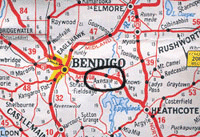The hobby of Amateur Radio, now more than 100 years old, covers a vast array of activities. No one amateur could hope to regularly participate in all of them and it is not even necessary in order to enjoy the hobby. Over time, an individual will gradually move towards the activities that are of most interest. Amateur Radio is represented in virtually every country and island in the world. In these days of the Internet, mobile telephones and many other distractions, why think about becoming a licensed amateur? What can you do?
Contests:
There are many country-specific and worldwide contests all year round. Commemorative awards and certificates are available to reward active participation.
A worldwide, no cultural boundary hobby:
Be part of the International friendship of more than 3 million or so amateurs worldwide. Each country has its own representative body that represents the hobby in regular conventions that ensure that the hobby's frequency allocations, etc., are preserved. Amateurs come from all walks of life and include school children, astronauts, professionals, royalty and scientists. Many major transmitting equipment-manufacturing companies were started by radio amateurs.
The national language of Amateur Radio is English.
Satellites:
There have been over 40 amateur satellites launched since the first one in December 1961. They can be viewed as "orbiting repeaters" for distant communication enhancement.
Earth-Moon-Earth (EME):
Use the moon as an intermediate reflector by bouncing signals off it.
Amateur Television:
Transmit your own black and white or colour amateur television pictures.
Computer interface:
Connect your computer and communicate to the far corners of the earth via radio to Internet to radio (IRLP) and combine with GPS for position reporting (APRS). Use the computer to control your transmitter, to log your contacts, send and/or decode and display morse code, teletype and the many other digital modes that are available. Morse code, and its examination, is no longer an International requirement but you can still use it if you want to. When all else fails, it may well be the last mode to succeed.
There is a myriad of free, downloadable, operating and logging software on the Internet.
International Space Station (ISS):
Most members of the ISS crew are amateurs and amateur communication is an integral, encouraged part of their mission. A large percentage of the worlds astronauts are licensed amateurs.
Experimentation:
Develop better performing antennas and test equipment. Enhance your electronic skills.
Technology:
Amateurs have been at the forefront of technological developments over the last 100 years or so. Never think that everything has been invented. It hasn't and never will be. You could become part of the next great development that is just around the corner. A developing technology at the moment is Software Defined Radio or SDR. This is where a computer and its software controls the operation of a "black box" which could be a radio receiver, transmitter, a telephone or all at the same time. If you like computer programming, combine your electronic and programming skills.
Emergency Communications:
Radio Amateurs can provide a source of emergency communications at times when conventional communications links are strained or out of action due to disasters or emergencies. The Wireless Institute Civil Emergency Network (WICEN) is recognized in the State Disaster Plan and provides communications for many sporting events for practical, ongoing training.
Repeaters:
There is a network of VHF & UHF repeaters for local contact enhancement.
Local Clubs:
The Bendigo-based
Midland Amateur Radio Club (VK3CMZ) meets 3rd Friday of each month at the Scout Hall, Vine Street, Bendigo. Web site:
http://www.marc.org.au.



